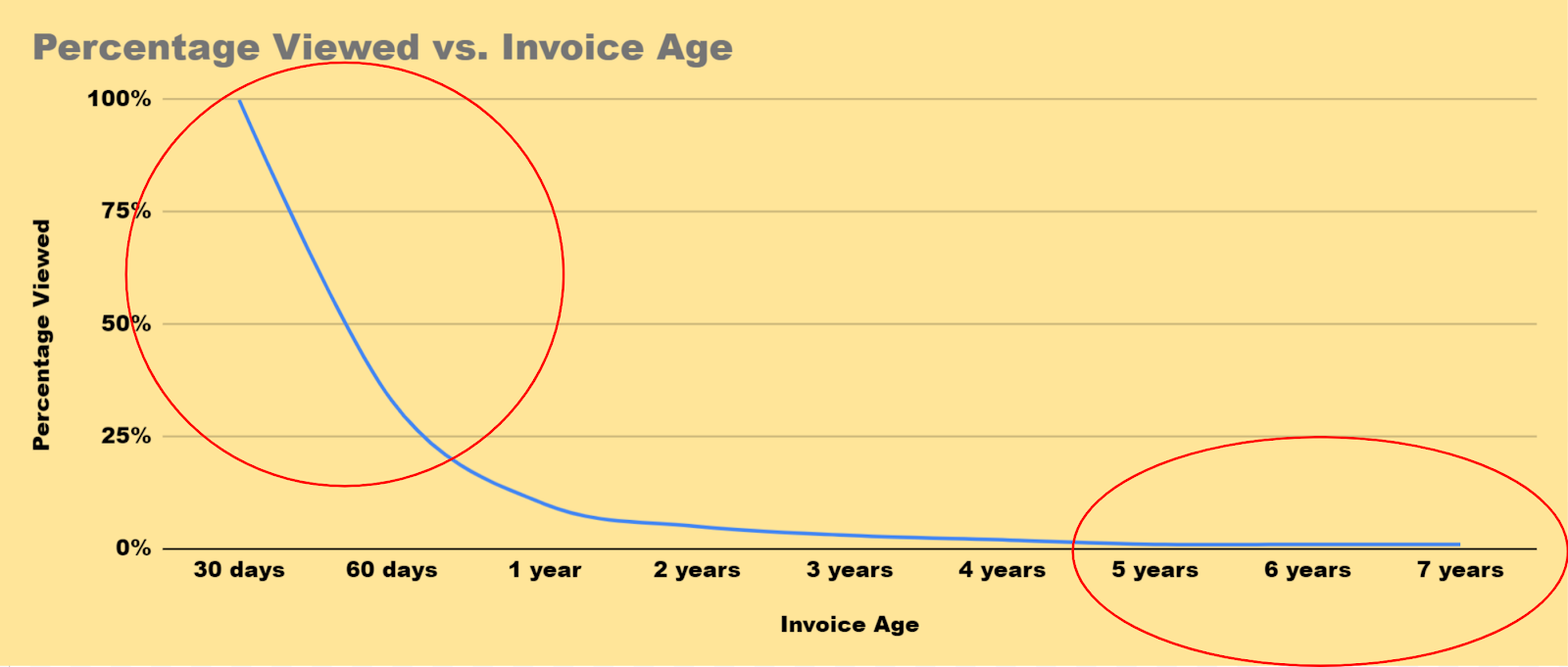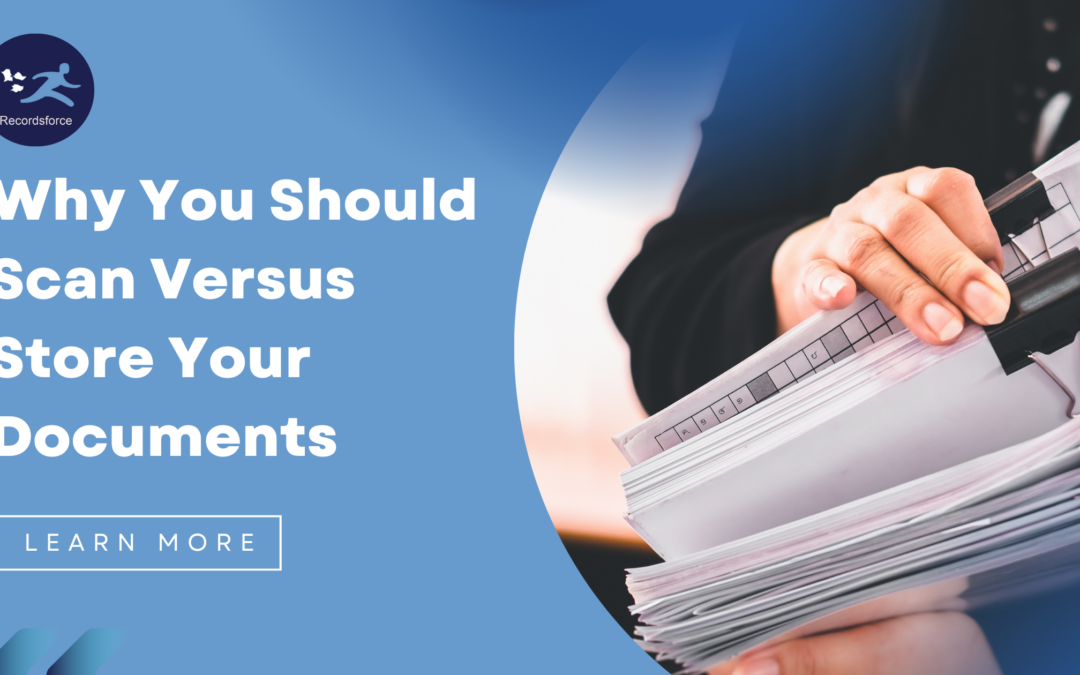If you have documents that you need to keep for regulatory or compliance reasons, you might have considered storing them off site or getting them scanned. Having a framework to help you make the decision as to which is best in what cases can be helpful in understanding when you should continue to store your documents and when scanning them would produce a return on investment.
If you don’t know how long to keep your records, check out our blog on the FLOH method for determining document retention requirements.
Once you understand how long you’ll be keeping your documents in question, you’ll need to understand just one other factor, “How likely are you to retrieve a file?” We call this “Retrieval Frequency” and it is measured by looking at how often you need to retrieve a file from the collection in question based on how old it is.
With your retention period and retrieval frequency in hand, you can now use the framework below to determine your best action. Take a look at the chart for a typical set of invoices below.

Chart: Percentage chance an invoice will be viewed plotted against how long the document will be stored. In this case, the illustration is of an invoice that is kept for seven years from receipt.
When looking at the chart above, notice that in the first 30 days the chance of looking at an invoice is 100%. That’s because every invoice you receive has to be looked at to be processed into your ERP. Any time you have an extremely high retrieval frequency, there’s a very high probability that digitizing that document and applying automation technology to the data extraction process is your best option. It will end up being much less expensive and much faster than typing each invoice into the ERP by hand and then hand filing the invoices into filing cabinets, eventually putting them into boxes that go into a warehouse or offsite for long-term storage.
Speaking of long-term storage, if you look at the chart, you’ll see that documents that are not highly likely to be looked at (less than 10% chance) are only being stored for a few years (2-4 years). It’s likely that just continuing to store them will be your more cost effective choice. This assumes you have already missed the opportunity to scan them on the front end as described above. Once you store records for 5 or 6 years, you can, in many cases, justify the scanning of the documents early in their life cycle in order to spend less on managing the documents over their lifetime.
Would you like to discuss if your records are a better fit for scanning or storage? Interested to see what scanning your documents would cost? Visit www.recordsforce.com to access our self service solution builder that allows you to build estimates for your scanning projects!

